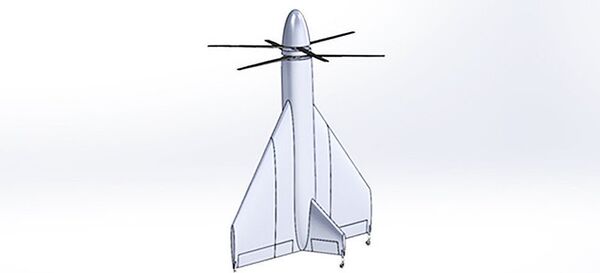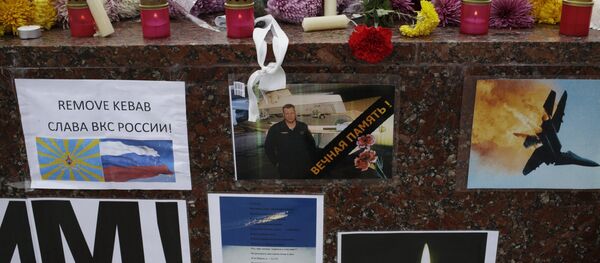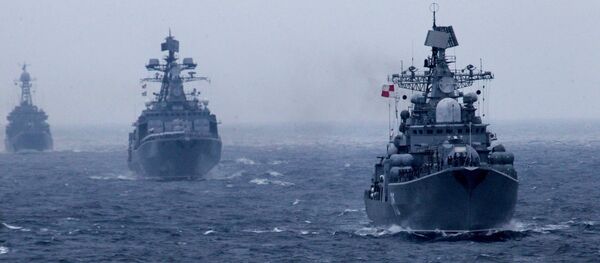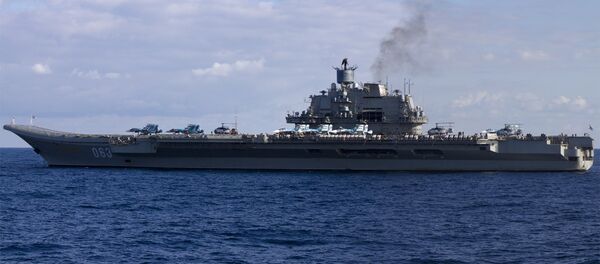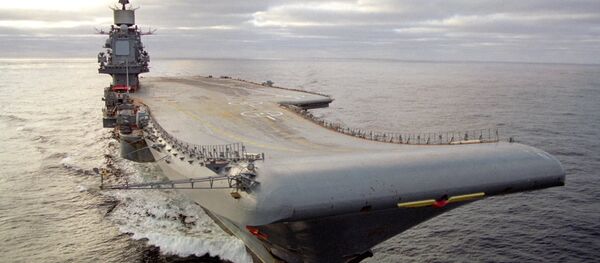This year, Russia presented to the world its new short- to mid-range narrow body Irkut MC-21 while continuing the promotion of the regional Sukhoi Superjet 100 on the foreign markets, as well as announced the development of new planes on the basis of the short-haul turboprop Ilyushin Il-114 and the long-haul wide-body legendary Ilyushin Il-96.
AIRLINER OF THE 21ST CENTURY
Irkut MC-21, Russia’s new mid-range passenger jet with a narrow-body design, aims to become a face of the country’s reviving civil aircraft making industry.
The aircraft's design was developed by the Yakovlev Design Bureau. Following the collapse of the Soviet Union, the privatized company lost the state financial support as well as orders, and spent the 1990s on the brink of survival. At the time, the company was carrying out groundwork studies for the Yak-242, a short- to medium-range passenger airliner. Later on, in the early 2000s, Russia’s space authorities launched a competition for the development of a new aircraft to replace the Soviet-era Tupolev Tu-154 that was designed in the mid-1960s.
The Yak-242 was announced the winner of the competition shortly before the Yakovlev Design Bureau became part of the Irkut Corporation, later amalgamated into the newly-established United Aircraft Corporation (UAC). The merger was mutually beneficial, as Irkut was looking for a design bureau for civil aircraft, while Yakovlev needed physical production capacity.
On June 8, 2016, Irkut unveiled the two-engine short- and mid-range airliner. Shares of the corporation rose by more than 8 percent after the presentation of the aircraft.
The plane will compete in the same market niche with Boeing 737 MAX and the Airbus A320neo and is expected to have a number of advantages over its tough rivals on the international and domestic market. Among them are advanced aerodynamics due to wings and a tail made of carbon composite materials and an enlarged fuselage (4.06 meters in the MC-21, versus 3.96 and 3.75 meters in the A320 and Boeing 737, respectively), enabling the densest arrangement of the MC-21-300 to carry 211 passengers versus 189 in the case of Boeing 373MAX and 180 in the case of A320neo.
The manufacturer expects MC-21 to have lower fuel consumption than other aircraft of its class by 10-15 percent as in 2016 the Russian engine building industry made major step toward the serial production of a new Russian PD-14 engines which overall maintenance will be up to 17 percent cheaper compared to the similar engines produced by foreign companies.
Its development by the Aviadvigatel Corporation in Perm, central Russia, began back in 2008, on the basis of the PS-12, an updated variant of the PS-90.
The PD-14 program comprises a whole family of engines with a thrust on takeoff of between 9 and 18 tons, including the PD-14A, PD-14M, Pd-10, and PD-18R, which could be mounted aboard the jets of different class.
"As the result of the creation and testing of this engine, we are looking at a passenger liner which we can say with 100% certainty will be competitive with Boeing and Airbus," the deputy prime minister explained.
The engines are currently undergoing the final stages of development and testing aboard an Ilyushin Il-96-300 four-engine long-haul wide-body airliner. Five of them have been assembled in 2016.
Russia's United Engine Corporation (UEC) aims to manufacture up to 50 such engines each year by 2023. The plane will be equipped with the PD-14 by the end of 2017; the sales of MC-21 airliners with the latest Russian PD-14 engines will begin in 2019. The clients could also purchase version of the aircraft equipped with Pratt & Whitney high-bypass turbofan engine PW1000G.
In the early 2017, Russia will carry out the first flight test of its advanced passenger jet. For the purpose, the company had already constructed two MC-21 aircraft, one is currently in Moscow Region and the second one is in Irkutsk Region, where ground training activities are carried out. The assembly of the third in Irkutsk is almost completed.
According to the head of the Rostec corporation Sergei Chemezov, serial production of the MC-21s will begin in 2018. In order to prepare flight personnel beforehand, in November 2016 a full flight simulator of the МС-21-300 has already been installed at the Aeroflot training center. There pilots will be able to learn the information-control system of the plane’s cockpit, the simulator will enable them to practice flying, aircraft navigation or operation of onboard systems and equipment, communication and interaction between the crew and ground services.
Other airlines, including foreign carriers, have inked letters of intent for other 100 planes. Malaysia’s Crecom Burj Berhad intends to buy 25 planes. The Egyptian KATO Investment company ordered six planes during the Dubai Airshow 2015. In late April, Irkut and Air Tanzania signed a MoU, expressing mutual interest in the Tanzanian flag carrier acquiring Russian MC-21 airliners. Azerbaijan is interested in purchasing 10 Russian MC-21 passenger jets, among the potential buyers are Indonesian and Iranian airlines.
According to Rogozin, Russia plans to sell up to 1,000 MC-21 jets within the next 20 years.
EXPANSION OF SUPERJET
Meanwhile, Russia continues promotion of another airliner, Sukhoi Superjet 100 (SSJ-100), on the foreign markets. In 2016, Sukhoi Civil Aircraft Company (CJSC) produced 18 twin-engine regional passenger airliners, one more than a year before, but way less than in 2014, when 37 Superjets have been manufactured. In 2017, the company intends to produce 35-39 jets, hence the year 2016 was characterized by active marketing efforts by CJSC.
In May, CJSC made a major breakthrough on the way to expand the geography of clients. CityJet, an Irish regional airline and currently the only European customer of the Russian company, received the first SSJ-100 as part of the deal to lease 15 SSJ-100 planes with an option for another 16 aircraft. The total value of the deal is over $1 billion, including maintenance services. CityJet has retained an option to purchase 10 additional SSJ-100s.
According to expert estimates, the delivery of the jets to a European customer despite political tensions demonstrated that the plane outperforms rivals like the Embraer 190, the Bombardier Q400 and the Antonov An-148 due to its aerodynamic characteristics based on a design by Sukhoi Civil Aircraft and the Central AeroHydrodynamic Institute (TsAGI). The plane’s improved fuel efficiency should be attributed to superior aerodynamics and a new engine. The plane’s low cost is another major advantage that does not diminish high passenger comfort levels of the plane assembled in Komsomolsk-on-Amur. Although the jet ranks among narrow-fuselage airliners, its fuselage is larger than those of direct rivals providing passengers with more comfortable seats, larger luggage racks and leg room.
The deal with the Irish airliner triggered interest of other European companies. In February, media reported about the interest of the Danish Greenland Express airline in five Russian jets while in November, Norwegian FlyViking said it could buy at least 20 jets.
One of the top managers of Iran Civil Aviation Organization (IRI) told Sputnik in an exclusive interview in January that several Iranian airlines were interested in the Sukhoi. In the past, Iran used Tupolev Tu-154 planes, which showed themselves as reliable and high-quality jets.
In June, Mohammad Reza Nematzadeh, Iran's Minister of Industry, Mine and Trade, said the country was interested in the joint production of Sukhoi Superjet 100 airliner with Russia while in December, Iran's Aviation Companies Association announced upcoming talks on the potential deal.
On February 3, Russian Industry and Trade Minister Denis Manturov said that Russia and Egypt were discussing a possible delivery of up to 40 SSJ-100 to the EgyptAir airline. Moscow and Cairo even signed a memorandum on the delivery of four SSJ-100 planes to Egypt's Air Leisure charter airline.
However, Egypt made the deal to buy more Superjet 100 jets conditional on the renewal of the flow of Russian tourists to the country. Egyptian Commerce and Industry Minister Tarek Kabeel said in June that if Russia resumed flights to the country, suspended last fall after a Russian airliner crashed in the Sinai desert as a result of a terrorist attack, it could be a key factor driving Egypt to sign new deals on the Sukhoi Superjet.
Moscow also intended to promote the aircraft on the Indian market since Moscow and New Delhi are actively cooperating in the defense industry and nuclear field. Besides, in December media reported about alleged interest of the Armenian airlines that could buy four jets.
Maybe potential customers of the company will be inspired by the example of Mexico’s Interjet, the only SSJ operator in Latin America, that in October received its fourteenth Russia-made Sukhoi Superjet 100 passenger plane of the initially procured 20. In March it placed an order for additional ten aircraft, bringing their number up to 30.
Sukhoi at the same time is trying to find new customers making more targeted offers for its potential clients. In August, it unveiled the SportJet, the world's first plane tailored to the needs of professional athletes. The public at Rio de Janeiro's Marimbás Club could see the jet's full-size mock-up during the 2016 Olympics.
The aircraft is designed in close cooperation with experts on medicine and sports science to maximize performance of frequently traveling athletes by helping them train, recover and rest while in the skies.. It features a recovery zone for physiotherapy and workouts; a resting zone with smart seats to monitor biometric data as well as a coaching zone to analyze performance. Anastasia Gordeeva, the head of the Sukhoi Civil Aircraft's press office, told Sputnik that several clients expressed their interest in the new jet. The SportJet can be customized for various disciplines, including hockey, basketball and football.
BLAST FROM THE PAST
At the moment, Russian airlines operate some 90 aging Antonov AN-24/26 short-range passenger inter-regional planes, majority of them ending their lifespan in one-two years. UAC believes that domestic airlines will need about 90-100 aircraft of up to 70 seats in the next twenty years.
In order to address this gap, in May Deputy Prime Minister Rogozin said that the country would begin to manufacture the Ilyushin IL-114 passenger turboprop driven aircraft on a large scale in 2019. The Il-114 is capable of landing not just on an airstrip, but also on fields, on snow and ice after travelling for distances of up to 900 miles with up to 70 passengers.
The IL-114 was developed by Ilyushin Design Bureau in the late 1980s for short-haul flights within the Soviet Union. Since then, 20 planes of this type have been manufactured in Uzbekistan. Its production was terminated in July 2012 after the Uzbek government decided to change the specialization of the Tashkent Aircraft Plant.
On December 6, the presidential envoy in the Volga Federal District Mikhail Babich said that Russian President Vladimir Putin instructed to establish production of the aircraft in the Nizhny Novgorod plant Sokol. According to Babich, production will start in 2019-2020. The Il-114 program will be financed with almost 56 billion rubles until 2025 from the state budget and stipulates construction of 100 planes.
Although the plane is primary aimed to eliminate the gap in the Russian regional aviation, in August Russia offered India to launch production of Ilyushin Il-114-300 regional airliners at India's Hindustan Aeronautics Limited (HAL) facilities.
RETURN OF THE LEGEND
The domestic passenger transportation in the long-haul segment after the collapse of the Soviet Union was carried out almost exclusively by planes manufactured by Boeing and Airbus. However, in May the Russian government announced the development of the long-haul aircraft on the basis of the legendary Il-96-400. The plan stipulates allocation of 50 billion rubles to the corresponding program to be implemented by 2021.
Original Il-96 made its first flight in 1988. It was manufactured at the Voronezh Aircraft Production Association until 2009 when the production was suspended since fuel efficiency of the aircraft was relatively law in comparison with the competition from Boeing and Airbus. However, amid the devaluation of the Russian national currency, low manufacturing price of the plane makes it more attractive for the local airlines. Besides, the aircraft could be equipped with the advanced above-mentioned PD-14 engines, which could make it fuel-efficient even comparing with the tough competition.
According to Deputy Prime Minister Rogozin, the updated Il-96-400 will satisfy Russia’s basic needs both for long-haul flights from European part of the country to the Far East, and for charter trips during the holiday season.
The updated plane, nearly 10 meters longer than its Il-96-300 predecessor, will feature 370 passenger seats on planes including business class, and 400 seats for the plane's all-economy version. The wide-body jet is expected to feature multiple variants, including a transport modification – the Il-96-400T, which can also be used by military aviation including as a tanker.
In 1990, the Soviet Union manufactured nearly 30 percent of global passenger airliners. After the collapse of the USSR, by the 2000s, the production dropped to the single-digits. The year 2016 brought hope that after the long pause Russia would revive its passenger aircraft manufacturing.

